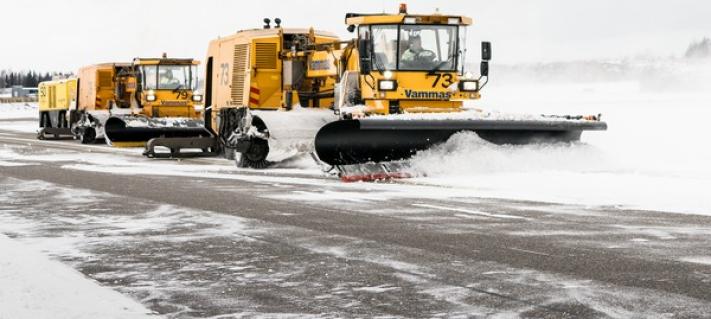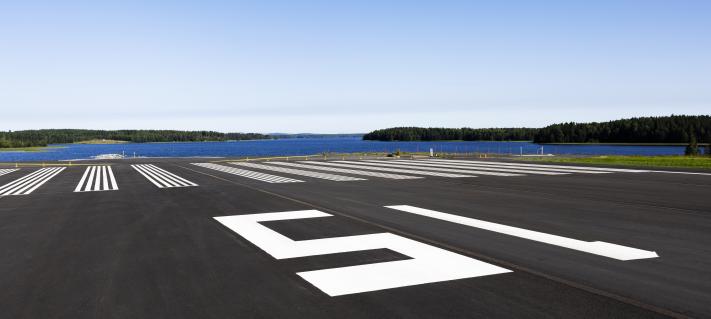Helsinki Airport will experience big changes over the next few years. One of the key developments will soon be in the spotlight – a new travel centre will be built in front of the airport’s new main entrance. The travel centre’s purpose is to improve the accessibility of the airport both from Finland and its neighbours, such as St. Petersburg and the Baltics. This ensures smooth travel from door-to-door by bringing together various modes of transport under one roof.
“The multimodal travel centre is a hub for different modes of transport. It is not a traditional travel centre, which could be found in many places in Finland, but a considerably larger entity that also connects air travel,” says Henri Hansson, senior Vice President of Technical & Environmental Services at Finavia.
He emphasises that Finavia’s objective is to improve connections to the world from all across the country. This requires solutions integrating all forms of travel – it’s important that all these link to each other smoothly at the airport.
In addition to air transport, the travel centre can be used to arrange onward journeys to and from Helsinki Airport via taxi, car hire, and local and long-haul buses and trains. At the moment, one can get from Helsinki Airport to the Ring Rail Line and into the Helsinki area on local trains, through which there is a connection to the regional railway. However, the airport is preparing to also become directly connected to the regional railway.
There have been discussions about a so-called flight rail which will connect Helsinki Airport to long-haul train traffic. It will link Finland’s regions, including Helsinki, to both domestic and international transport and, consequently, provide opportunities for growth for the Finnish economy.
In addition, it has been proposed to connect Tallinn and Helsinki by rail. In the design of the new travel centre, both the Baltic countries and their ferry services, as well as St. Petersburg and the Nordic countries, have been taken into account.
“It is not just about getting to and from the airport, but also about linking Helsinki-Vantaa to different growth centres, thus promoting business mobility on the global market,” says Hansson.
Important EU support
There is a demand for a travel centre as passenger numbers at the airport are growing rapidly. Helsinki Airport will soon be ready to serve 30 million passengers a year. Such an increase in air passenger numbers requires a modernised connection to land transport.
While air traffic is increasing, Helsinki Airport also needs more personnel. Currently there are some 25,000 people working in and around the airport, and the number will rise further by thousands over the next few years. These employees will also require an efficient way of commuting to and from work.
The Multimodal Travel Centre project was subsidised by EU funding, which amounted to EUR 2.25 million for the planning phase and EUR 7.38 million for the implementation phase.
“EU support was a huge help in making the investment decision. Finland is a sparsely populated country, and in addition to the Finnish metropolitan area, there are other urban centres nearby, such as St. Petersburg. Even the environment benefits from the smooth integration of these different modes of transport. Responsibility is a vital part of Finavia’s operations and decision-making.”
Ready in 2021
A design competition was organised for the extension of the terminal, and solutions were also sought for the travel centre. The centre has yet to take shape, but its design will certainly be contemporary and digitalised, and will aim at maximising the ease of travel. The area of the travel centre will cover 10,000 square meters.
“A relatively small area will host many different modes of transport, which requires a large infrastructure. The airport’s main entrance is very busy, which is why the biggest challenge of this project is to ensure smooth operations and to maintain customer experience in a densely constructed area. In the construction phase, smooth flow and safety are the most important things and we will consider them as carefully as possible.”
The travel centre will rise right outside of the renovated terminal and will continue to grow as a hub that will provide jobs, offices and various services, such as shops and parking facilities.
The centre is scheduled to be completed in 2021, alongside the terminal extension.
“I think this will become a great urban centre. The future of air transport seems to be positive, and it will be tied by the travel centre to the growing land transportation industry. It will further highlight the attractiveness of the airport to investors, increase various development projects and encourage more corporate headquarters to be established in the area,” Hansson concludes.





